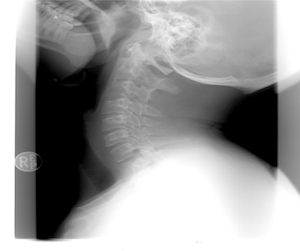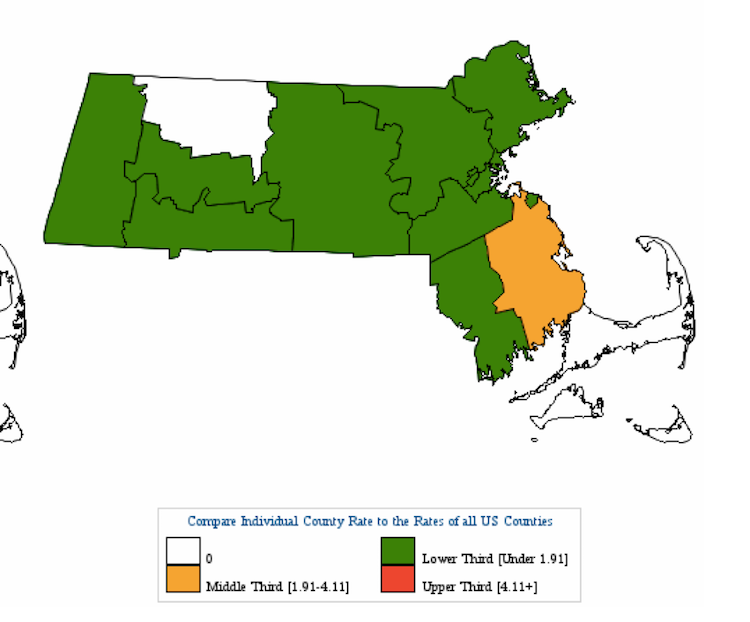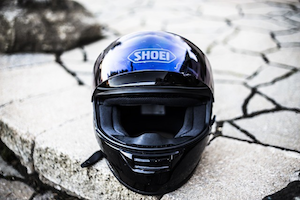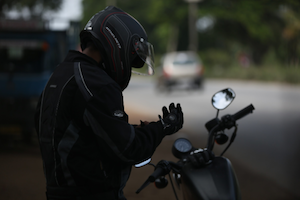Motorcycles Accidents, Injuries, and Safety in Massachusetts

In 2017, 5,172 motorcycle riders and passengers died in crashes nationally. This is double the number since 1997. In Massachusetts, 53 motorcyclists died in motorcycle accidents—roughly 11.4% of all motor vehicle fatalities. Not all of these fatalities were from other motor vehicles crashing into the motorcycle or from unforeseeable road conditions. 28% of all riders, across the U.S., who died in a motorcycle crash in 2017 were alcohol-impaired. As a motorcyclist, it is your duty to know the safety requirements in your state. However, sometimes, accidents happen, and they are out of your control. In that situation, you have the right to file a personal injury claim (or wrongful death claim if you are a family member) against the parties responsible for your injury.
10 Common Causes of Motorcycle AccidentsThere are many ways that a motorcyclist can get into an accident. However, some are more common than others. Here is a list of the ten most frequent causes:
- A Car Turns Left in Front of a Motorcycle. This is the most common cause of a motorcycle accident, accounting for roughly 36-42% of all motorcycle accidents involving another vehicle. An accident usually occurs in one of three ways:
- When the motorcycle is going straight through the intersection
- When the motorcycle is passing the car
- When the motorcycle is trying to overtake the car
- Hitting Gravel. Loose gravel is extremely dangerous for motorcycles—especially if you are turning a corner.
- Entering a Corner too Fast. If you enter a turn too fast, you can run into the side, go into the other lane (and into other traffic) or try to lean into the corner to overcompensate. In doing so, you can lose traction on the back tire and then crash.
- A Car Changes Lanes into the Motorcycle. Often, a driver of a car doesn’t see a motorcycle before it changes lanes. This can result in either hitting the motorcycle or forcing it into another lane or even off the road.
- Colliding with a Fixed Object. According to the NHTSA, motorcycles were more frequently involved in fatal collisions with fixed objects than with other vehicles. In 2016, 23% of the motorcycles involved in fatal crashes collided with fixed objects.
- Head-on Collisions. 72% of the motorcycles involved in a crash with another vehicle were head-on collisions compared with only 7% rear-end collisions. This type of accident can be catastrophic.
- Speeding. In 2016, 33% of all motorcycle riders involved in fatal crashes were speeding. When you compare this to 19% for passenger cars, it is nearly double.
- A Car Door Opening. There are many reasons why this type of accident may happen, but most often it is due to a failure of the driver of the car to notice the motorcycle approaching.
- Slippery Roads. While slippery roads are dangerous for any vehicle, they are particularly hazardous for motorcycles because they have only two wheels and are therefore less stable. This increases the likelihood of sliding and crashing. Some of the most common slippery road conditions include:
- Wet roads from rain or melting snow
- Leaves
- Painted surfaces
- Oil or other greasy substances on the road
- Uneven or irregular road surfaces
- Alcohol Intoxication. In the latest report from National Highway Traffic Safety Administration (NHTSA), there were 5,286 motorcycle riders killed in accidents. Of those, roughly 25% were alcohol-impaired.

Nationally, motorcyclists are far more likely to be the victims of crashes, especially fatal ones, than other motorists. According to the NHTSA, the number of motorcycle fatalities from 2008 to 2017 was 48,727. There were 5,286 motorcyclists killed in 2016, and motorcyclist fatalities occurred nearly 28 times more frequently than passenger car occupant fatalities. The NHTSA notes that motorcycling deaths were down in 2017 with 5,172 motorcyclists losing their lives, but this figure is still far higher than the ten-year average.
Fortunately, not all motorcycle accidents result in death, but almost all result in serious injury to the rider. The statistics in Massachusetts appear to follow the national pattern.
Here are some of the most common motorcycle injuries that are not fatalities:
- Head Injuries. A head injury, specifically a traumatic brain injury is one of the most devastating injuries an individual can suffer. It is essential to understand that head injuries can still happen even with protective gear on, such as a helmet. Motorcyclists move just as fast if not faster than other motorists, but lack the protective frame of a vehicle to soften the impact. However, wearing a helmet greatly reduces your risk of a traumatic brain injury. Additionally, wearing goggles or protective glasses, in addition to a helmet, will act as another preventative barrier to protecting your eyes and brain from being punctured during an accident. Some examples of traumatic brain injuries include:
- Concussions—the most common and least severe traumatic head injury
- Loss of consciousness
- Seizures and loss of coordination
- Coma
- Spinal Cord Injuries. Frequently, any sort of spinal cord injury is assumed to result in paralysis. While this can be the case, it's not the only way that a motorcycle accident can result in a spinal cord injury. An accident can cause a bruised spine, slipped or herniated disc, and other debilitating spinal cord injuries.
- Broken Bones. The human body vs. a hard object is likely to result in broken bones and tissue damage. Wearing a helmet can protect your skull. Wearing protective gear on your body can protect against road rash and burns. But, very little can protect against broke bones in the event of an accident where the rider hits an object or is thrown from the motorcycle
- Road Rash. In a motorcycle accident, proper safety gear such as jackets (preferably leather material), boots, and helmets can protect against road rash, and even burns in the event of an accident. Road rash can be quite serious, requiring skin grafts if the burns are severe. The three types of road rash are:
- Avulsion - where skin, fat, and muscle are scraped away to reveal bone
- Open wound - requiring stitches or skin grafts
- Compression road rash - where the body of the rider is caught between two objects resulting in bruising or broken bones
- Upper Body / Trunk Injuries. The upper body is where most of the vital organs are located. When a motorcyclist crashes, the body takes the force of the impact, often with damage to the internal organs. The severity of internal damage can range from punctured lungs or liver or heart, torn arteries such as the aorta, and other internal bleeding. The critical thing to note about this sort of injury is that frequently the rider won't know about the damage immediately, because it is not visible. This is why seeking immediate medical attention is so important.
Massachusetts vs. all U.S. Counties

Figure 1 By The National Highway Traffic Safety Administration
Motorcycle Accidents Compared with Other Motor Vehicle Accidents in MassachusettsAs you can see from the chart below, motorcycle accidents in Massachusetts only rank above large truck accidents in terms of frequency.

Figure 2 By The National Highway Traffic Safety Administration
The Most Dangerous Counties in Massachusetts for Motorcycle FatalitiesThe data in the table below was compiled using the National Highway Traffic Safety Administration’s traffic safety facts data from 2013-2017. The chart shows all 14 counties in Massachusetts and the number of fatalities in 2017 (the most recent data available).
| Barnstable County | 2017 | 0 |
| Berkshire County | 2017 | 1 |
| Bristol County | 2017 | 6 |
| Dukes County | 2017 | 0 |
| Essex County | 2017 | 4 |
| Franklin County | 2017 | 0 |
| Hampden County | 2017 | 4 |
| Hampshire County | 2017 | 2 |
| Middlesex County | 2017 | 7 |
| Nantucket County | 2017 | 0 |
| Norfolk County | 2017 | 8 |
| Plymouth County | 2017 | 11 |
| Suffolk County | 2017 | 1 |
| Worcester County | 2017 | 7 |

If you want to ride a motorcycle in Massachusetts and do so legally and safely, you need to make sure you are aware of what is allowed and what is prohibited. Being mindful of these laws not only will ensure that you are compliant with state law, but can aid in the prevention of a serious or fatal accident.
Motorcycle Laws in MassachusettsUnfortunately, every state has a different set of laws that govern the use of a motorcycle. Here is a list of the seven most common motorcycle laws that you should be aware of if you are going to ride a motorcycle in the state of Massachusetts:
Helmet Law - More than 80% of all reported motorcycle crashes result in injury or death. According to the Centers for Disease Control and Prevention (CDC), the single best way to save lives is for states to pass helmet laws. In 2016, helmets saved 1,859 lives. Wearing a helmet also reduces the risk of death by 37% and reduces the risk of dead injuries by 69%.
Massachusetts has implemented some of the strictest helmet laws in the country. All riders and passengers of a motorcycle are required to wear a helmet. The helmet must have the DOT symbol on it—indicating that it meets Federal Motor Vehicle Safety Standards. These standards establish minimum performance standards, such as position, fit, impact, and retention.
Here are some things to look for and pay attention to when buying a helmet:
- Make sure that the helmet is DOT compliant. The label on the back of the helmet should read: “manufacturer and brand, model designation, DOT, FMVSS No. 218, CERTIFIED”
- A full-coverage helmet will provide the best protection
- Never buy a used helmet
- Look for a helmet that fits the shape of your head (i.e., round or oval)
- Make sure that you measure your head for size. A helmet that is too loose will move around and not provide the protection that you need.
How to identify an unsafe helmet:
- Lack of a stiff foam liner
- Lack of robust chin straps and rivets
- It weighs less than 3 pounds
- Advertisements that promote “lightweight” or “thinnest materials”
- Novelty designs that are not intended for the road.
Handlebar Height Law - Handlebars must not go above the rider’s shoulders when they are properly seated on the motorcycle.
Eye Protection Law - Riders must wear eyeglasses, goggles, or a protective face shield unless the motorcycle has a face shield or screen.
Mirrors - All motorcycle must have at least one mirror, muffler, and turn signals.
Noise Restriction Law - Massachusetts law states that a motorcycle may not exceed 82 decibels when operated within a speed zone of 45 mph or less. When operating within a speed zone of over 45 mph, the decibels cannot exceed 86.
Passenger Laws - There is no age requirement for passengers, but the passenger must have a seat and footrest.
Lane Splitting Laws - In Massachusetts, lane splitting is prohibited, although two motorcycles may legally ride side by side in the same lane.
Motorcycle Safety & Gear
Aside from state-specific laws. there are some standard rules of the road that all motorcyclists should know and practice. Of course, having proper safety gear should also never be overlooked.
- Know the rules of the road (see above section)
- Choose the right bike for you. Some things to consider include:
- Bike type—make sure that you can handle the motorcycle
- Ergonomics
- Seat height
- Wind protection
- Storage
- Sound and noise
- Invest in an Antilock Brake System
- Price (not necessarily a safety feature, but always a valid consideration)
- Wear the appropriate gear
- NO jeans, t-shirts, and sandals
- What you wear to ride should protect you from wind, bugs, and road rash
- Leather is best
- Reinforced jackets, gloves, full-length pants, and boots provide the best protection for road rash
- Bright color gear will help make you more visible to other motor vehicle drivers
- Proper eye protection such as goggles; not just your sunglasses
- Only ride with a passenger when you have the skill and experience to do so
- Never drink and drive
- Be a defensive driver—cars don’t always see you
- Watch for irregular road hazards like potholes, oil, puddles, debris, and gravel
- Avoid bad weather if you can
- Always use your headlights; even in the daytime
- Avoid weaving in and out of lanes
- Watch your speed
- Take a motorcycle safety course or refresher course if already experienced
Beyond studying for and taking the DMV exam to get your motorcycle license, it is always a good idea to take a basic motorcycle safety course. Experienced riders can also benefit from such a refresher course.
The Motorcycle Safety Foundation has a variety of courses available that cater to the entry-level rider up to the more experienced rider.
Massachusetts Rider Education Program (MREP) offers training courses throughout the Commonwealth as part of the Registry of Motor Vehicles. In fact, there are four courses that the MREP offers that, if passed, will waive the motorcycle road test. They are as follows:
- Basic Rider Course
- Basic Rider Course 2
- S/TEP Basic Course
- S/TEP Advanced Course
They also offer 13 approved motorcycle training schools at 26 locations throughout Massachusetts and nine motorcycle training curriculums, the remaining five courses not listed above include:
- Advance Rider Course – Motorcycle Safety Foundation
- Rider Like a Pro
- On Street Training Tour – Riding in the Zone
- Advance Parking Lot Course – Riding in the Zone
- One on One Track day Training – Riding in the Zone
Getting into a motorcycle accident can prove to be a very stressful, not to mention painful, time for you and your loved ones. Knowing what you need to do to make yourself whole again can help ease the confusion and frustration. Below are four steps to get you started.
Seek Immediate Medical AttentionIt is important to seek medical treatment immediately after your accident. You have a responsibility to make sure that your injuries are treated right away so that you minimize any existing injury. Any failure on your part to seek immediate medical attention could negatively impact your claim.
When you receive medical treatment, a record of your injuries at the time of the accident will be documented—which is a vital piece of evidence.
Track All Receipts, Invoices, and Important DocumentationIf you are physically capable, you will want to take photos of your injuries, any damage to property, and the scene if possible. If there were witnesses, you will want to get their names and contact information. Once you have received medical attention, you will want to keep all receipts of co-pay payments, invoices, records of lost wages due to the injury, receipts for transportation costs back and forth to your medical appointments, and any other documentation that supports your claim.
Contact Your Insurance CompanyIt is important to report your accident to your insurance company to make them aware of your accident and injuries. When you inform your insurance company of your accident, you do not want to go into any detail at this stage. Ideally, you will want your attorney to reach out to the insurance company on your behalf so that you can avoid making any official or recorded statements before you have thoroughly discussed your case with your attorney.
You should make sure to consult with your attorney before you sign any official statements or documents with an insurance adjuster. Your recorded statement can (and most likely will be) used against you. It is important to note that the job of the insurance adjuster is to pay out as little as possible.
Massachusetts is a no-fault auto insurance state. This means that when an accident causes injuries, each party files a claim with their own insurance company for Personal Injury Protection (PIP) benefits. This protection covers medical expenses and any out-of-pocket expenses incurred—no matter who caused the accident.
Please note that in the state of Massachusetts, insurance providers do NOT have to provide PIP coverage to motorcycle riders.
A no-fault claim does not cover pain and suffering, other non-economic damages, or motorcyclists, but if your injuries meet the criteria below, you can step outside of the no-fault claim process and file a personal injury lawsuit directly with the insurance company of the driver who caused your injuries:
- the injured person must have incurred at least $2,000 in reasonable medical expenses, and/or
- injuries resulting from the accident must include permanent and serious disfigurement, fractured bone, or substantial loss of hearing or sight.
In personal injury claims, Massachusetts follows a comparative fault rule. Comparative fault means that if the injured person is 51% or more responsible for the accident, and therefore their injuries, they won’t be able to recover any damages from the other parties involved. If their fault is found to be less than 51%, the inured party can still recover damages— although their percentage of fault will reduce the amount of damages awarded.
For example, if the court found that the injured party was 25% responsible for the accident and the court or jury awarded the injured party $100,000, the injured party would only receive $75,000 in damages because they were already found to be 25% at fault for the accident. $100,000 x 25% = $25,000. $100,000 - $25,000 = $75,000.
Seek Legal AdviceIn Massachusetts, you have three years from the date of the accident to file a claim to recover damages. This time limit is known as the statute of limitations. If you let this time run out before you seek legal advice, you will have no further remedy.
Once you hire an attorney, they will be able to guide you through the process that applies to your situation. An attorney will also directly contact insurance companies, obtain medical records, speak to witnesses, and gather any information to support your claim.
For More Information, Contact Jeffrey Glassman Injury LawyersIf you have been injured in a motorcycle accident and have questions or concerns about how to handle insurance claims or how to file a personal injury lawsuit, contact the Jeffrey Glassman Injury Lawyers for a free and confidential consultation at (617) 777-7777.
 Jeffrey Glassman Injury Lawyers Home
Jeffrey Glassman Injury Lawyers Home





